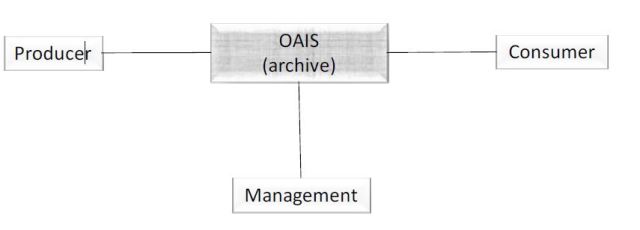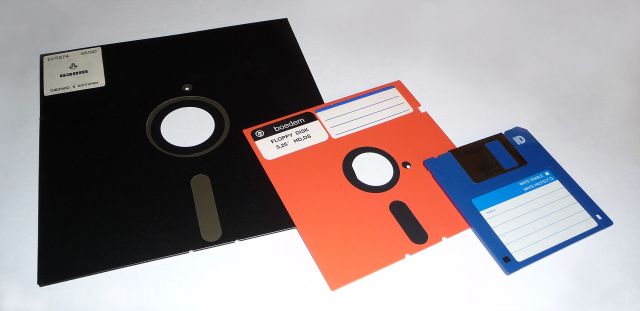One of the main goals of every archive is to store the objects for a long time. Do you remember Fedora? This is a framework which matches the OAIS requirements. But before we analyze the principles of the OAIS model, let’s see what happens all around this state of the art model.
 Basic Concept[1]
Basic Concept[1]
Those are the three stakeholders – the producer, the management and finally the consumer.
From a historical point of view, material has always been created by the producer. There is no difference if we talk about analog sources like letters, buidlings and so on or so called “born digitals”. The producer provides the information added to the archive.
The management is responsible for access rights and managing operations. Copyright is for example a task for the management system.
And last but not least the role of the consumer: It is the customer who will search for information and who relies on the presented material. And she or he decides if the archive is usable or not.
In the center of these three, there is an archive which operates on the OAIS – Open Archival Information System. Now let us expand this basic model to the OAIS model
OAIS -Functional Entities[2]
Since 2000 The OAIS model is the state of the art model for long time preservation and has six key functions.
- Ingest
The producer creates an object. This will be transferred into a SIP – Submission Information Package – Metadata and Information are added to the SIP and repacked as an AIP – Archival Information Package. The AIP then moves on into the archival storage. - The archival storage
has only two main tasks. First, to store the AIP in a secure way, which includes backup and maintenance; second, to keep the AIP up to date to avoid errors. - The Data Management Function
is responsible for the descriptive information to identify objects. In addition, it is necessary to manage the archive and database functions, such as queries and responses. - The Administration
provides the services and all of the functions of an operation system, for example regarding the communication between Producer and Consumer. In administrion lies the responsibility for submitted information and management of the access policies as well as the management of the stored archival standards. In one sentence: the Administration is the brain of the OAIS model - The preservation planning
is responsible for long term preservation. This is where recommended updates on formats, data or system migrations are planned. - The Access
stores copyright terms, destinguishes between User and Administrator, controls the access and interacts with the User.
The OAIS model is a platform independent, open standard, without a limitation on data types or formats. However, the OAIS reference model also requires a strict separation of data storage and information management. The combination with defined interfaces allows the bundeling of ressources – for example Fedora as a framework – and offers newly developed possibilities – for exmaple the cirilio client.
And even hardware will not last forever.
Legacy Storage systems 😉 [3]


